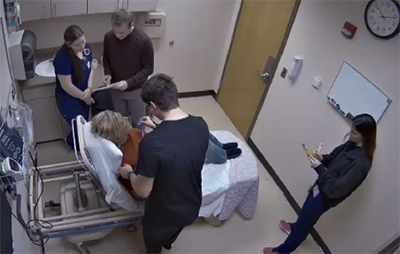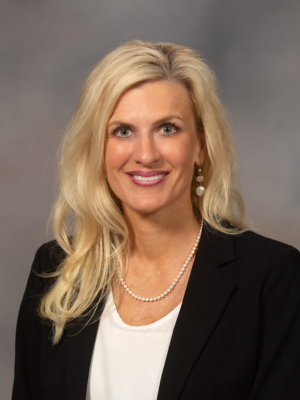Academic Affairs highlights

Director of Clinical Skills and Simulation Labs
The value of interprofessional education
A homeless veteran presents to the emergency department with shortness of breath. Upon previous admissions, he was suspected of inebriation and requested a warm meal and bed to sleep in. Why not implement an interprofessional education (IPE) activity between medicine, nursing, pharmacy, along with utilizing simulated participants (SPs) to decrease implicit bias and reinforce the importance of values, ethics, teamwork and communication?
A child needs a vaccination to prevent cancer linked to human papillomavirus (HPV) infection. Why not implement an IPE activity for nurses to train dental and dental hygienists in safe administration of HPV injections and have dental students training nursing students in how to screen for head and neck cancer?
Mrs. Penner injured her back lifting boxes at work. Her pain progresses from acute pain to chronic, then to substance use disorder. It is up to medicine, nursing, occupational therapy, pharmacy and physical therapy to care for her during three separate visits to their clinical setting. Why not implement an IPE activity to provide the best collaborative environment between these disciplines to improve overall patient care outcomes?
These are a few of the many IPE activities that our Traditional BSN and Accelerated BSN students are involved in. Students learn about, from and with other disciplines across the University of Mississippi Medical Center campus through these activities.

Other IPE activities with nursing students' involvement are:
- Occupational therapy and nursing—mobility, transfers and how to assess vital signs.
- Physical therapy and nursing—transfers, body mechanics, mobility, medication safety concerns through a case study activity
- Pharmacy and nursing—medication errors and communicating the error to the patient
Through these IPE events, nursing has learned to work as part of an interprofessional collaborative health care team. The lessons learned from these events are helping to improve the quadruple aim: reducing cost, increasing patient satisfaction, improving outcomes and improving work life for providers.
Going for Magnet status with collaboration


Dr. Jill Clayton, professor and RN-BSN program director, and Brittany Vice, project manager for marketing and recruitment, have partnered with Ellen Hansen, chief nursing and clinical services officer for Children’s of Mississippi, to increase the number of BSN-prepared nurses within the children’s hospital. The hospital is applying for Magnet designation through the American Nurses Association (ANA) at the end of 2025.
The Magnet Recognition Program through ANA is a designation that recognizes nursing leaders for aligning their nursing strategic goals to improve the organization’s patient outcomes. The Institute for Healthcare Improvement (IHI) recommends that all RNs have a BSN by 2020. The number of BSN-prepared nurses in the institution is reported in the Magnet application. Approximately 230 Children's of Mississippi nurses hold an associate’s degree in nursing (ADN), while 74% are BSN-prepared nurses.
Hansen has set a goal for 80% of the nurses working at the hospital to be BSN-prepared. To reach this goal, Children's of Mississippi would need a minimum of 55 ADN nurses to receive a BSN degree before the end of 2025.
To help meet that, the SON recruitment duo have completed four in-person meetings at the Sanderson Tower, with virtual attendance options, to recruit the nurses into our RN-BSN program. Also, a future short video promoting the program will be distributed to the Children's of Mississippi nurses via Hansen.


